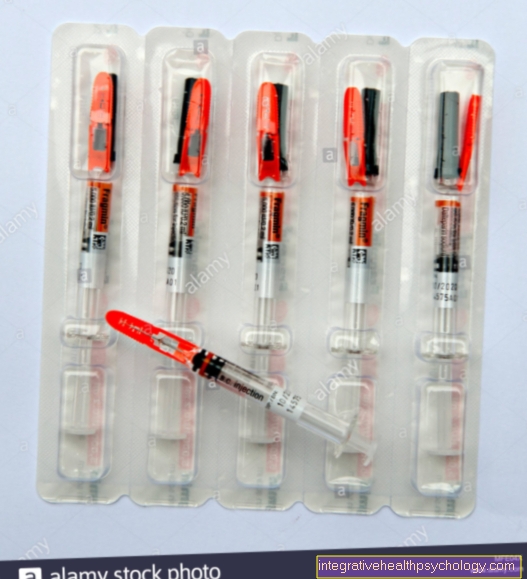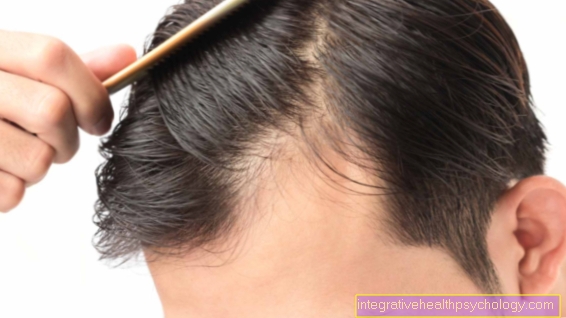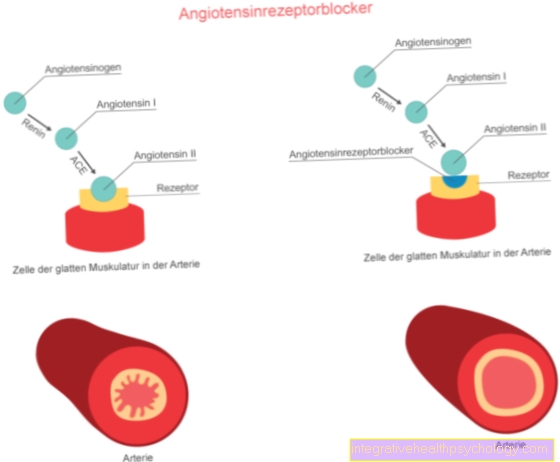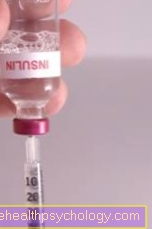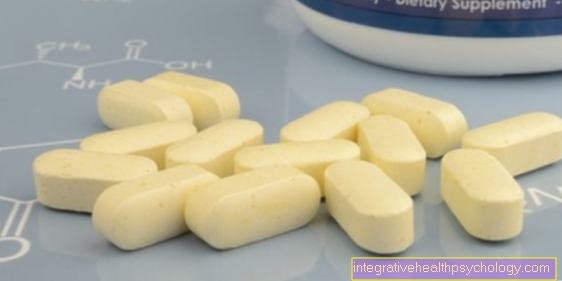Antibiotic therapy of a nasal furuncle
Synonyms in a broader sense
"Huge pimple on the nose"
definition
A nasal furuncle is a bacterial infection of a hair root (hair follicle) at the nasal entrance. There is a danger when the pus that develops melts into the surrounding tissue.

Dosage form
Nasal furuncle are mostly with Antibiotics treated. These can be administered orally, i.e. in Tablet form, as ointment applied or directly into blood be injected.
Because the most common causative agent of the nasal furuncle is the bacterium Staphylococcus aureus antibiotics are given that help against this pathogen. This includes almost everyone Penicillin types.
Whether the antibiotic is given directly into the vein, in tablet form, or as an ointment depends on the size and location of the boil. For small boils, an antibiotic ointment is usually sufficient, for larger boils it may be necessary to take tablets or to give the antibiotic directly into the body through the vein. If it is necessary to give the antibiotic directly into the vein, an inpatient stay in the hospital is usually necessary.
Ointment treatment of a nasal furuncle
In the case of boils, so-called "Pull ointments“Eligible for treatment. These promote blood circulation and work pain reliever and reduce the flow of sebuminvolved in the development of the boil. In addition, the ointment has antibacterial and anti-inflammatory Properties.
If there is already a stubborn inflammation of the hair follicle, simple home remedies and pull ointments are often not enough. The majority of nasal furuncles arise from bacterial infections, not infrequently through a Staphylococcus aureus, which is on the skin and only in some cases causes inflammation of the hair follicle. In these cases, the doctor may give a antibiotic ointment prescribe. This is often with one penicillin (e.g. Flucoxacillin), Clindamycin or one Tetracycline offset. These are antibiotics that are effective against a wide range of bacteria and mainly cover the staphylococci. The antibiotic ointment only works locally and contains the bacteria. In doing so, it prevents the inflammation from spreading and promotes healing. Is already one larger area affected by the inflammation or additional symptoms such as fever occur, must be a systemic antibiotic administration over Tablets or directly via the vein respectively.
Frequently used antibiotics
1. Flucloxacillin
One of the antibiotics that can be given is Flucloxacillin, for example in Staphylex is included.
It is either in 250mg or 500mg Capsules administered. The maximum dose for adults is 12g, but a dose of around 3g is usually sufficient. It is simply swallowed with a glass of water. As with any medication, you should read the package insert before taking it and contact a doctor or pharmacist if you have any questions.
Side effects of flucloxacillin
Flucloxacillin side effects include:
- nausea and Vomit
- Flatulence, diarrhea and stomach discomfort
- Dry mouth and
- Inflammation of the mucous membranes
Please also read our article on this Antibiotic side effects
2. Clindamycin
Another commonly prescribed antibiotic is that Clindamycin. This antibiotic is available in tablet form, as an ointment or as an infusion.
Contraindications and side effects of clindamycin
Clindamycin is not suitable for people who have a known allergy against this antibiotic asthma or suffer from kidney or liver problems.
In a pregnancy should only be clindamycin as Reserve funds alternative antibiotics should be tested beforehand.
Like almost any drug, this antibiotic has potential side effects. This includes:
- allergic reaction
- diarrhea and gas
- Circulatory collapse
- Liver and kidney damage


